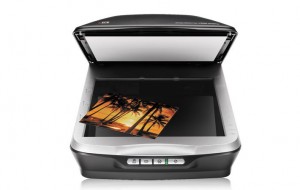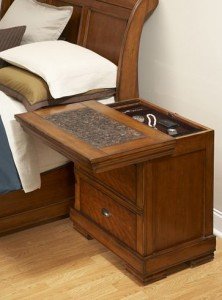This may be the most important post in our series on emergency preparedness. Why? Because what we want you to prepare for happens to more people every year than the type of cataclysmic disasters we have previously described. It’s also the toughest one to write because we’ve seen the impact that losing everything has on someone. Take our word for it, you’ll want to read this post carefully and ask yourself if you’re prepared.
Every year in every country in the world, people are forced to leave their homes immediately. In some areas the reason could be war or some form of political instability. Here in North America we’re faced with natural gas leaks, train wrecks, floods, forest fires, hurricanes, tornadoes, etc. Sometimes we have time to prepare, sometimes we don’t. Flooding alone can affect huge areas of Canada and the United States. Flash fires such as those in California and British Columbia can destroy whole neighborhoods. How can you prepare for such a crisis? By making sure you’ve got all of your eggs in one basket, that’s how. Let’s get going.
1. What’s important to you?
Make a list of things that would be devastating for you to lose. Consider jewelry, family photos, small antiques, historical documents; those things that are spread out all over your home, most of which you take for granted. Include passports, birth certificates, deeds, insurance policies, keys to safety deposit boxes, forms of identification and so on. We suggest making a list because we’re pretty sure you haven’t thought about many of these things for a long time. We are also sure that they are the first things you’d think about if, god forbid, your home vanishes in a flood or some other natural disaster. Don’t forget your banking information.
2. Make a record of everything that’s on paper.
For this you’ll need a scanner. We’ve had experience with HP and Epson models, all were under $200.00 and all had the ability to scan both photographs and negatives. Before making your purchase, consider the size of your family negatives. If you’ve got some from the early part of the last century or before, you should look for one that can scan a 4×5 neg or, in rare cases, 8x10s negatives. If you have boxes of slides, think about a model that will scan multiple negatives or slides at once. Here’s a shot of our Epson V500 Photo:

You might not consider family memories all that important until you lose them. We’re suggesting that your photos and documents are very important. Using a scanner to digitize as many of these items as you can ensures that that you and your family will have a past, something your children can reflect on and appreciate later on. Scanners these days are almost automatic. They’re dead simple to use, sometimes slow, but once you get going on your ‘save everything’ project, you’ll be whizzing along quite quickly.
3. Your own safety deposit box.
Once you get everything scanned, you’ll have a folder or folders full of digital information. If you’ve set the scanner to record its images in the jpg format, your life history won’t take up much room at all. Where to put it all? Well, storage is cheap these days. We would recommend putting your scanned images on several flash drives, one per family member, as well as on an external 2.5″ hard drive, either an SSD or a standard drive. Flash drives are small and rugged but more easily misplaced. A 2.5″ hard drive will hold far more material but they’re also light, reasonably durable and will slip into a coat pocket or purse.
In all cases, you’re probably better to lock the storage medium with a password. Most external hard drives will do that for you but the flash drives might not. The password could be your family name, your pet’s name or your street address, something that everyone will remember. These portable safety deposit boxes aren’t for everyday use so you don’t have to worry too much about them getting into the wrong hands because only you will know what’s on them. Here’s a cool flash drive idea that we found:

4. Keep your safety box safe.
When you have your stuff together, there are other considerations. Who gets a copy of everything? Every family member? Not the youngest? Not the oldest? Whoever needs a copy of your important information should get their own flash drive, stored somewhere that is easy to access, specially when they’re in a hurry. If you’re evacuated because of a fire or explosion, you have to be able to grab the storage device quickly. Put lots of thought into where these drives live in your home.
5. If you’ve got a bit more time…
In the examples above, you’re preparing for immediate evacuation. Basically it’s grab and run. If you have a bit more time and some extra room, it’s good to take some of the original documents with you; passports, bank books, extra credit cards that you don’t use all the time, things like that. A small case with a strap would suffice for all of this, something you can swing over your shoulder. The problem that this creates is one of security where you store these items. You’ll want them all in the same place but not somewhere which is too obvious. Why? If they are in plain site, a burglar would be interested in snatching them too. You can either hide them carefully or disguise them as something else. The fact that you’ve got everything in one place is good for emergencies but not so good if a thief breaks in.
You might want to consider a home safe, something that is heavy but secure against theft and fire. A key lock is quicker should you have to access the safe when you’re in a rush but less secure than a combination lock. Some of the newer safes use a fingerprint scanner for extra security but we’ve found them slow and very frustrating when you’re in a rush. Here’s a safe built into a coffee table, very in-your-face if you’re a thief but who would know what it is except you?

We’ve given you the basics here, see what tricks and hidey-holes you can find on your own. Maybe we’ve forgotten some important information. Comment below or Like our Facebook page and comment there. Here’s the link:
Computers Made Simple on Facebook
Here’s a link to a story in the New Yorker, one that describes how quickly some people had to leave their homes as well as how many people on Staten Island lost everything during Hurricane Sandy:
